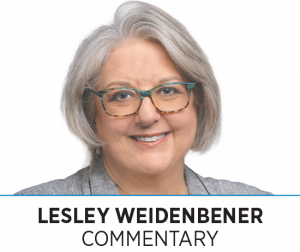Subscriber Benefit
As a subscriber you can listen to articles at work, in the car, or while you work out. Subscribe Now I spent part of last week in Baton Rouge—my first time in the Louisiana capital—for the annual summer meeting of The Alliance of Area Business Publishers, a group of independently owned business journals and magazines.
I spent part of last week in Baton Rouge—my first time in the Louisiana capital—for the annual summer meeting of The Alliance of Area Business Publishers, a group of independently owned business journals and magazines.
It’s one of my favorite annual events because it’s a chance to step away from the day-to-day newsroom operations (at least, mostly step away) and think more strategically. It’s also a way to learn from other news organization leaders who have similar goals and challenges but might be approaching journalism, projects and events in different ways.
Business journals are notorious copycats. Across the country (our group also includes a news organization in Canada and one in Australia), nearly all business journals and magazines do Forty Under 40 and other honoree programs, power lists like IBJ Media’s Indiana 250 and events similar to IBJ’s Power Breakfast series. When one newspaper or magazine in our group does something that works, its leaders share openly how the rest of us can replicate it. And the same goes for when we do things that don’t work—and there are plenty of those, as well.
It was at an AABP conference in Chicago that IBJ Media CEO Nate Feltman, who is also the IBJ publisher, decided we needed to create the Indiana 250. He’d been admiring similar lists published in Dallas and Los Angeles. We debated on the drive back to Indianapolis about how big our list would be. Dallas and Los Angeles do lists of 500 leaders; we settled on 250.
That was about 3-1/2 years ago, and we’re about to publish our third annual Indiana 250 book. And this year at AABP, I spoke on a panel with someone from Dallas, which will be publishing its 10th Dallas 500 this year, and from the Baton Rouge Business Report, which is preparing to publish its second Capital Region 500 list, about how to pull off one of these projects.
On other days, I was listening to editors and publishers talk about how their publications use artificial intelligence to make their reporting more efficient, how they use data collected for their industry Top 25 lists to provide readers with additional insights and how they evaluate whether some of their products (such as podcasts or email newsletters) are worth the effort going into them.
But the best intelligence actually comes from talking to other journalists and publishers between sessions, at lunch or dinner, or sitting in the hotel lounge late into the evening. That’s when you develop relationships that allow you to pick up the phone when you’re facing a tough call or just want to know how another news organization pulled something off.
I’ll write more over the coming months about some of the ideas we picked up at the AABP conference and how we intend to implement them at IBJ.
In the meantime, please read the story on page 3A where we detail the awards the IBJ staff took home from AABP. Congratulations to designers Sarah Ellis and Brad Turner and lead designer Audrey Pelsor for the honors they won related to graphics and design.
The Rundown, our political newsletter now written by reporters Taylor Wooten and Cate Charron, won a gold award for best specialty newsletter. Reporter Mickey Shuey won a silver award for best scoop for a story related to the Signia hotel the city is building at Pan Am Plaza. And Feltman, who writes in this space every other week, won gold for his columns. IBJ also won a gold award for best editorial.
I am so proud of our top-notch team. Congrats to all!•
__________
Weidenbener is editor and assistant publisher of IBJ and assistant publisher of Indiana Lawyer.
Please enable JavaScript to view this content.
